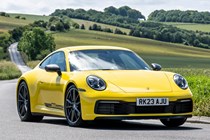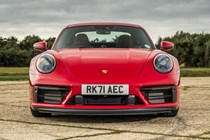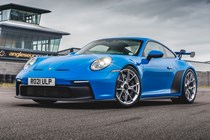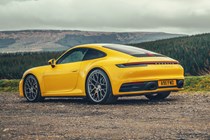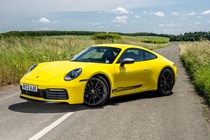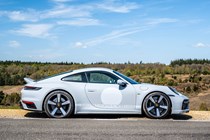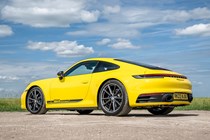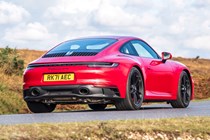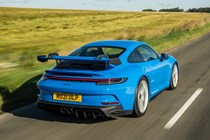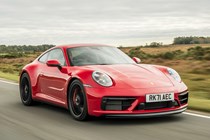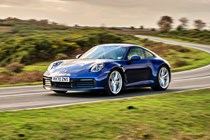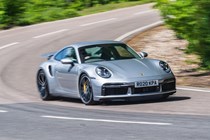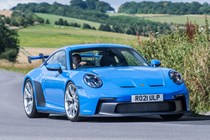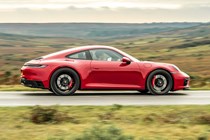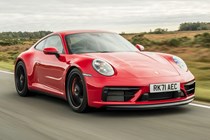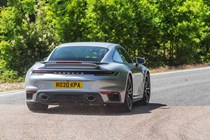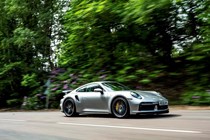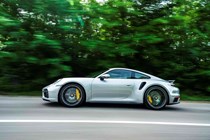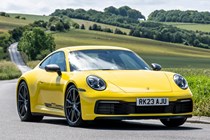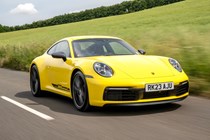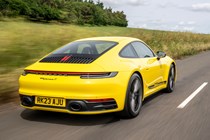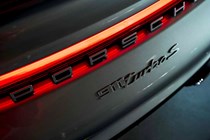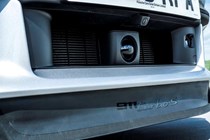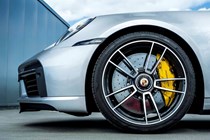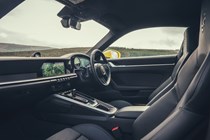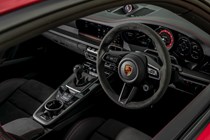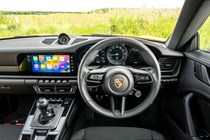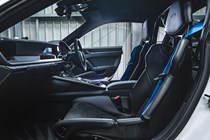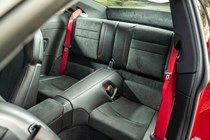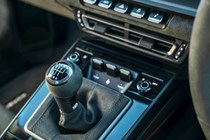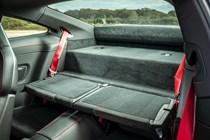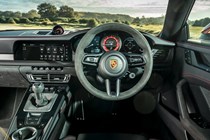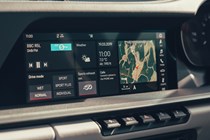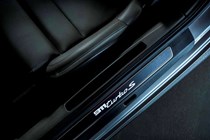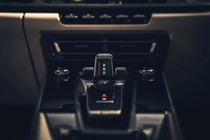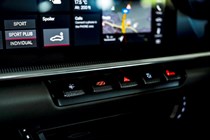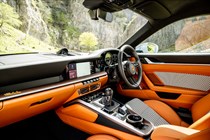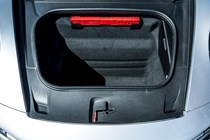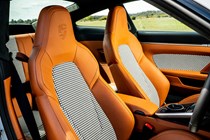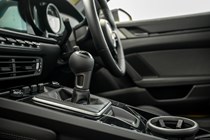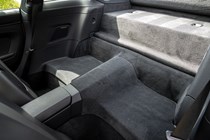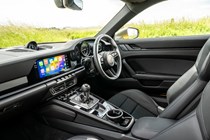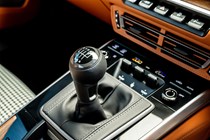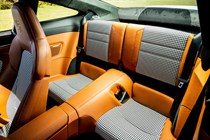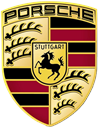
Porsche 911 engines, drive and performance
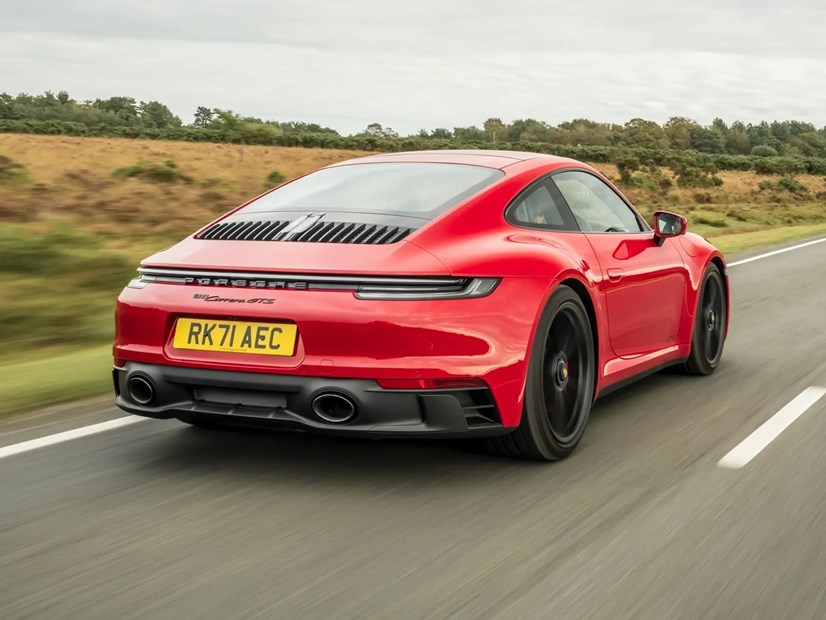
- Power ranges from 385hp to 650hp
- Almost every model is turbocharged
- Very fast and exciting to drive
Petrol engines
All Porsche 911s up to this point are powered by petrol engines, and though an updated 992 model with a petrol-electric hybrid motor has been seen testing, as yet this has not been announced for production.
With the exception of the race-derived GT3 variants, the entire 992 range uses turbocharging technology. So while you can still buy a specific ‘911 Turbo’ model, even the lowliest 911 Carrera now benefits from forced-induction for greater performance and efficiency.
Turbo and Turbo S models simply denote the highest power levels and the fastest 911s.
911 Carrera, Carrera T and Carrera S engines
The first rungs on the 911 ladder share a 3.0-litre twin-turbocharged ‘flat’ six engine, but in two different power outputs. Base Carrera and Carrera T models get 385hp, with the Carrera S upping this to a rather more serious 450hp.
Even the least powerful Carrera and Carrera T feel fast, breezing up to motorway speeds in no time at all while generating a great noise. The Carrera S is noticeably more forceful, with 0-62mph in less than 4.0 seconds.
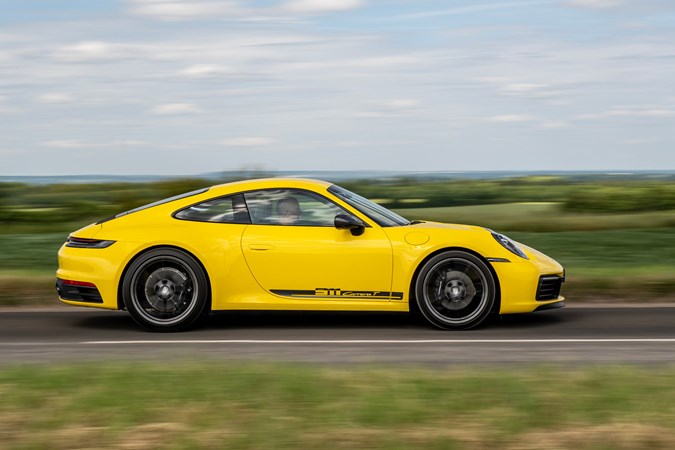
Carreras are PDK automatic only, but the Carrera T and Carrera S both offer the option of a seven-speed manual gearbox if you want a bit more involvement; this is a nice, snicky gearbox, too, which is a joy to use.
You can also choose the Carrera 4 and Carrera 4S models with all-wheel drive, giving greater traction and stability especially in slippery conditions.
911 GTS engine
The GTS badge has in many cases marked the sweet spot of a Porsche product, be it a sports car or an SUV. The 911 follows a familiar formula of upping power a little, to 480hp in this case, adding some must-have performance kit and a few visual tell-tales, too.
The engine is essentially the same as the Carreras, but much of the suspension is shared with the pricier Turbo. That makes this generation of GTS more than just a raid of the best bits of the options list.
911 Turbo and Turbo S engines
Turbo and Turbo S both get a larger 3.8-litre twin-turbocharged flat-six, delivering a mighty 580hp in the former and a huge 650hp in the latter. That’s enough for sub-3.0 second 0-62mph times that are easily achieved thanks to standard four-wheel drive, PDK automatic gearbox and launch control.
The acceleration on offer is savage, the Turbo S in particular flinging you down roads far faster than you thought possible. There are few quicker cars in the real world.
911 Sport Classic engine
The 911 Sport Classic limited edition launched in 2022 uses the same 3.8-litre twin-turbo motor as the 911 Turbo family (and gets the same wider bodywork plus a unique ‘ducktail’ rear wing) but here it’s detuned to 550hp.
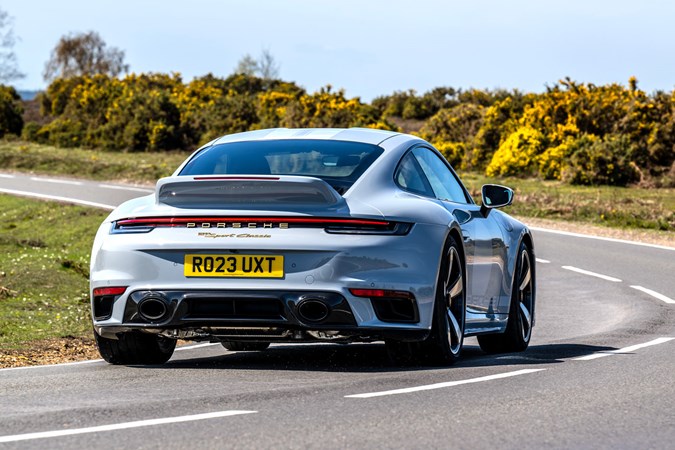
The reason for that is the Sport Classic comes with a manual gearbox in place of the PDK transmission; it’s intended to be more of an enthusiast driver’s car, and is indeed very joyful to drive.
911 GT3 and GT3 RS engines
If you like your sports cars raw and involving, the GT3 family may be for you. These are the only 911s that still use turbochargers, instead relying on motorsport engineering to deliver thrills via a high-revving 4.0-litre flat-six that develops upwards of 510bhp.
You can read more about these in our dedicated 911 GT3 and GT3 RS review. The limited edition Porsche 911 S/T launched in 2023 to celebrate 60 years of the 911 also shares the 525hp version of this engine with the GT3 RS.
What’s it like to drive?
- Very capable and very entertaining
- Yet still easy to drive day-to-day
- Turbo and Turbo S are outrageously fast
How the 911 drives depends greatly on which model you’ve selected and what options you’ve ticked. What remains the same is the combination of everyday usability and serious performance, it’s just some models are better at the former and others the latter.
All 911s have quick, precise steering that makes it easy to place the car on the road. Rear-wheel drive models are the most dynamically exciting, thanks to the unusual rear-mounted engine, which creates masses of grip as well as momentum, while four-wheel drive variants are incredibly sure-footed and fast.
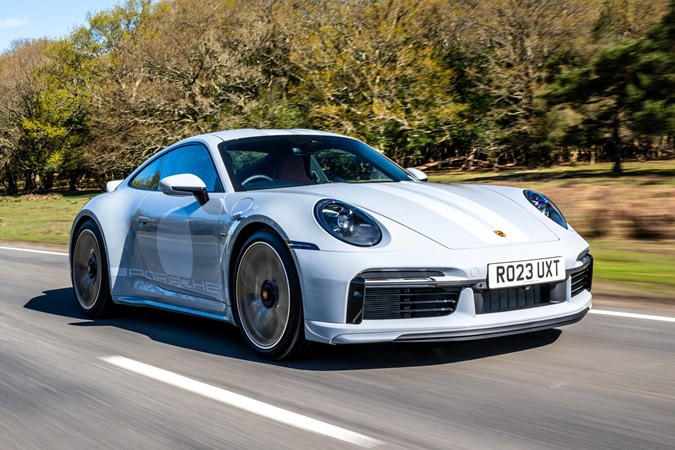
The eight-speed dual-clutch automatic gearbox labelled PDK is fitted to most models. This is brilliantly smooth when you’re driving sensibly but also highly responsive when you put your foot down or take manual control. Alternatively, the seven-speed manual gearbox option has a fine gearshift action and greater interaction – though the ratios are rather long and you may find the seven-speed gate confusing to operate. It’s easy to get lost working your way around the different gear planes, and you might find yourself jamming it into fourth when you going for sixth…
As standard every 911 gets suspension that can be stiffened or softened at the press of a button. In Normal mode Carrera and Carrera S models are firm but perfectly comfortable, with only the harshest ruts and bumps jarring. GTS and Turbo models are stiffer still, yet remain on the acceptable side of firm as long as you avoid the 10mm lower sports suspension.
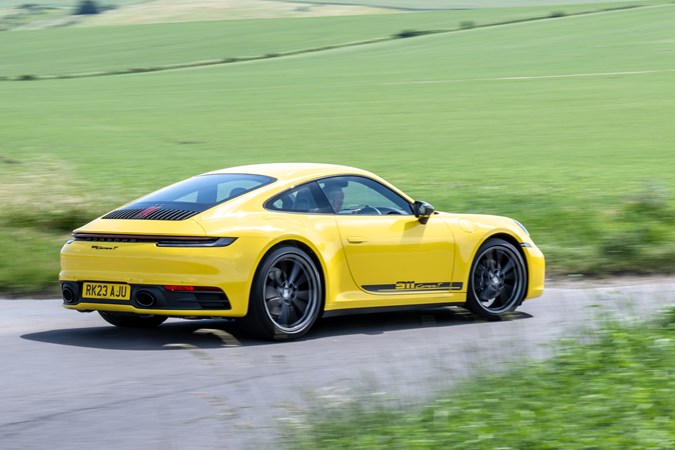
For most, the Carrera T or Carrera S will be all the 911 you need. You still get a sense of what the car’s up to through the controls and it’s more than fast enough on the straights and through the bends. If you want a slightly sharper focus, the GTS is even more capable and involving, too.
The Turbo and Turbo S by far the fastest, though, and the come packed with clever tech to limit body lean and maximise traction. They’re devastatingly effective cross country yet easy to live with every day, but only really come alive when you’re pushing them hard; they can feel almost too accomplished at conventional speeds. Exactly where you’re going to be able to stretch their legs in the UK is a manner for you, your conscience and the constabulary (track days and the German autobahns are your best option).
No price-equivalent rival can match the Porsche 911’s agility, while the Turbo S can give far more expensive supercars a run for their money when it comes to performance. There are more exotic options available for the same cost, however, such as the Audi R8 and Lamborghini Huracan (which are closely related to each other).
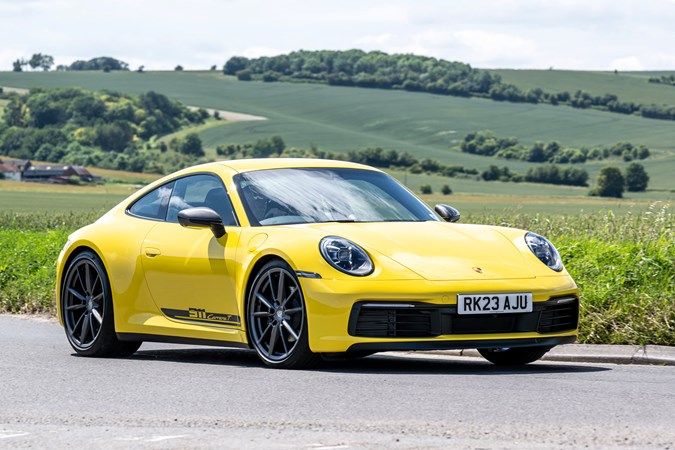
We find 911s are more fun with rear-wheel drive, but you’ll still enjoy yourself if you prefer the extra stability four-wheel drive brings. The optional rear-wheel steering and active anti-roll bars certainly improve low-speed manoeuvrability and reduce body roll, but we’d be tempted to give it a miss for the more natural feel of the standard suspension.
Whatever 911 you choose, you’ll find it capable of devastating speed in a wide range of environments. And although the GT3 models we’ve reviewed separately are certainly the most involving 911s of all, they’re so intense that many drivers may prefer the slightly more relaxed yet still highly capable approach of the road-oriented regular variants covered here.


